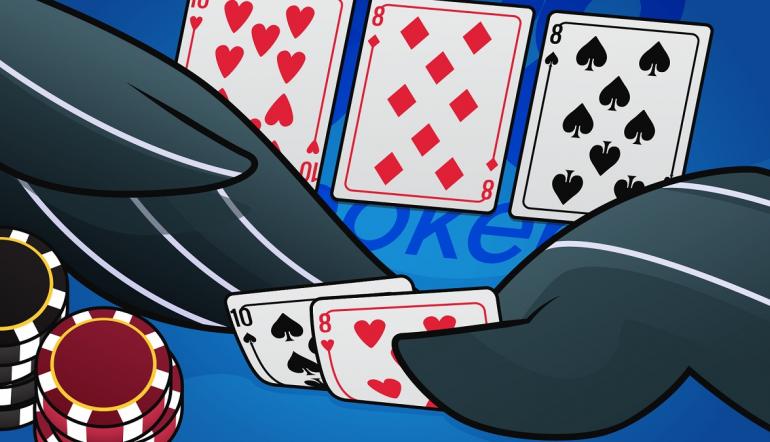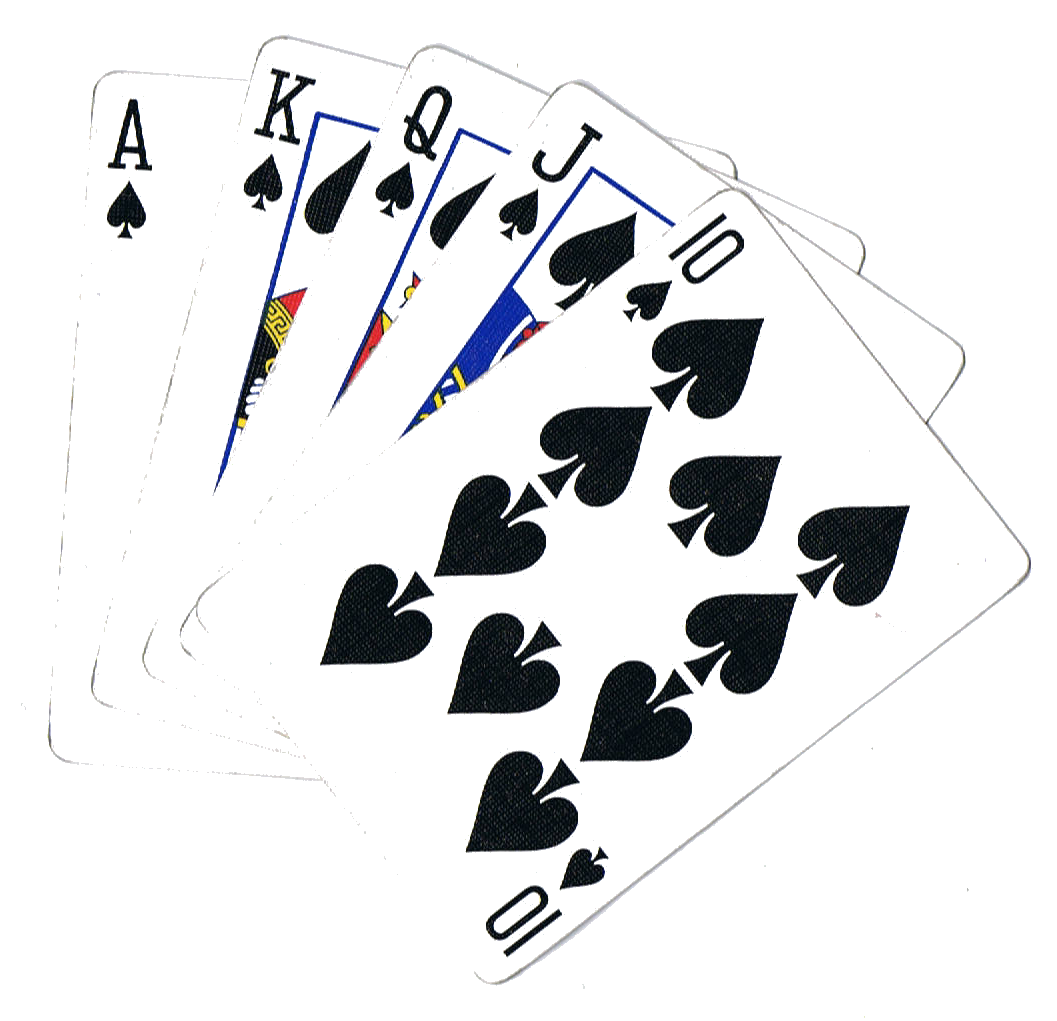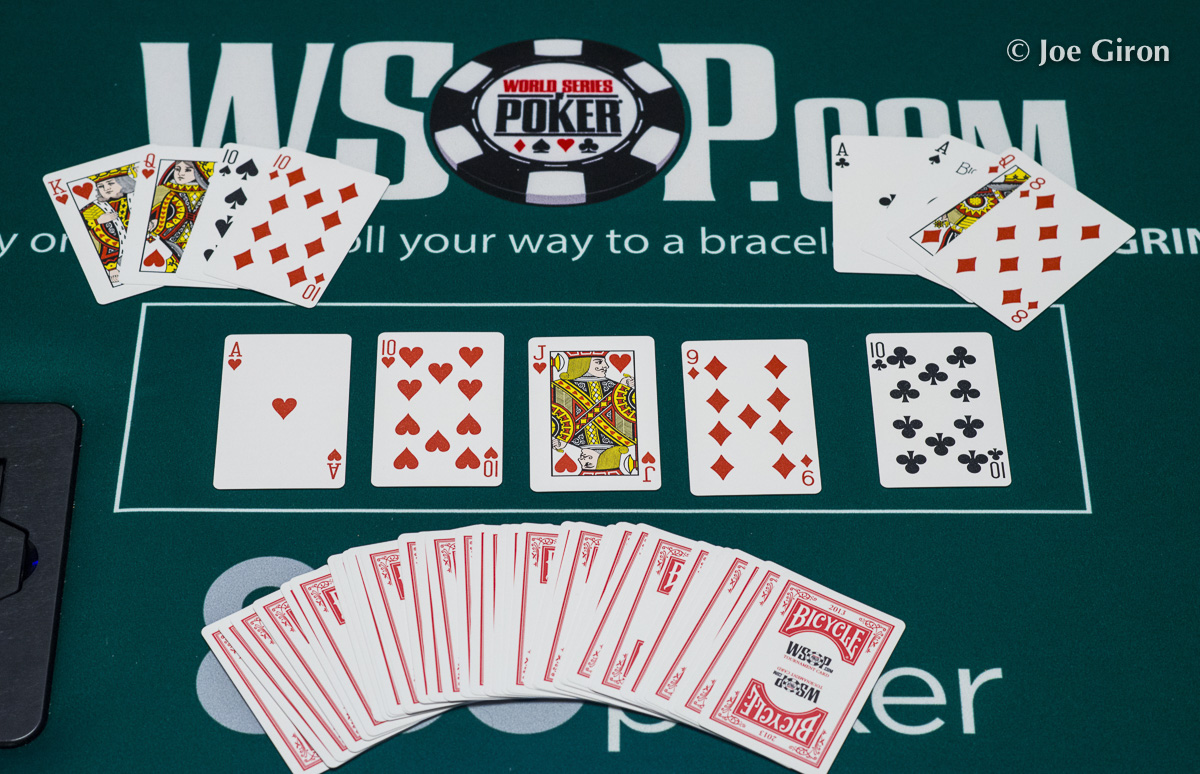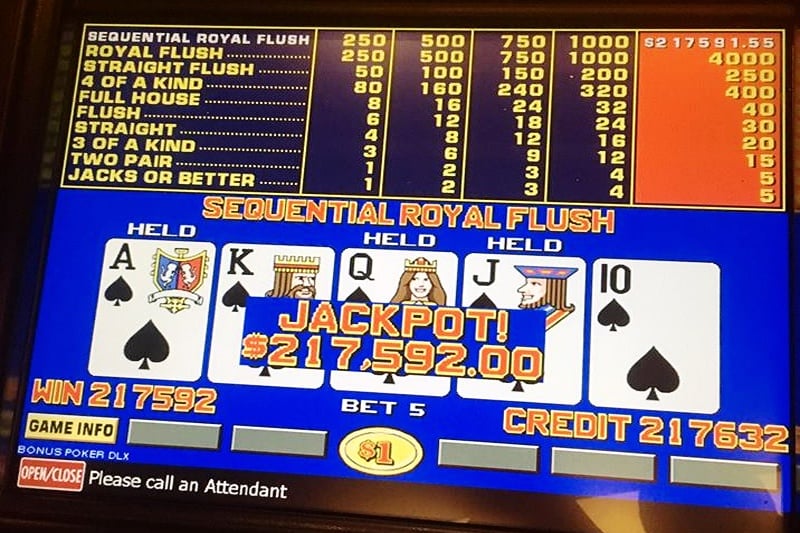Odds Of Getting Straight Flush In Texas Holdem
- Odds Of Getting A Royal Flush In Texas Hold Em On The Flop
- Odds Of Getting A Royal Flush In Ultimate Texas Hold Em
- Odds Of Getting Straight Flush In Texas Holdem Rules
- Odds Of Getting A Royal Straight Flush In Texas Hold Em
Playing poker is about playing the odds. The following list gives the odds for outcomes in Texas Hold’em hands. When you realize how heavily the odds are stacked against you, you may want to rethink going all-in before the flop with two suited cards. Use the odds to your advantage: 1 percent (1-in-100): Percentage of. The odds of two players flopping a flush at the same time are 205:1. That may seem like a long shot, but when it does happen the results are usually very costly for the player with the smaller flush. The best way to avoid this costly mistake is to only play suited hands that have an ace or king in them. The odds in this Texas Hold'em odds table are unlikely to directly help your overall strategy, but they are pretty interesting nonetheless. The Texas Hold'em odds for each of the different situations have been given in both percentage and ratio odds, so use whichever format you feel comfortable with. Playing Flush and Straight Draws. Mathematics: Flushes & Straights: Simple Pot Odds: Implied Odds: Reverse Implied Odds. Watch SplitSuit's video on Flushes and Flush Draws for 8 hand histories involving strategy on playing flushes in Texas Hold'em. You are on the flop with a pretty decent flush draw.
It is a common misconception that flush is more likely to hit. If you also believe that to be the case, then you are wrong. Well, maybe you are right, but it depends on which perspective you look at it. Let me explain.
As long as you start counting the hand from preflop, then you will hit the straight more often than flush. But if you have a flush draw on flop or turn, then you will hit a flush more often compared to when you have an open-ended straight draw, and you hit a straight.
There is a reason why flush has a higher ranking in poker than straight. It will hit less often. Look at this chance to win a straight and to hit a flush – from Wikipedia.
You will hit a flush every 0.20% of the time. So once every 509 hands. While you will hit a straight about 0.40% of the time or once every 255 hands, so you will hit almost 2 straights for every 1 flush that you hit.Table of ContentsWhy is it easier to make a flush than astraight?
But after all that I have written, why is it easier to hit a flush than a straight?
Well postflop, if you hold a flush draw, you have more outs to hit the draw than holding the open-ended straight draw and hitting the straight. You will have 9 outs to hit a flush on the flop or turn if you have a flush draw.
From flop to the river, we have 9 outs twice to hit a flush, which is roughly 38%, from turn to the river we have about 18% (9 outs once). On the other hand, if you hold an open-ended straight draw, you will have only 8 outs to hit it.
What many people are forgetting is that you will get the flush draw less often than you will open-ended straight draw. Getting a suited hand preflop doesn’t happen super often. You will have a flush draw on the flop only 5.1% of the time.
One thing that is often neglected is you not accounting in the times when you have a gutshot, and you hit it. It seems it doesn’t happen often, but you will usually have 4 outs to hit a straight, which is around 16% from flop to river. Not something we should forget about. On top of that, there are also some double gutters, which also gives you 8 outs to hit your straight.
So only looking from the postflop perspective, it can feel that it is easier to hit a flush than a straight, but as I explained, that can often be misleading. Straight will happen more often.
Let’s say you usually play connectors and therefore your chances to hit your straight draw increase. You would have flopped 8 outs straight draw (either open-ended or a double gutter straight draw) about 10.5% of the time on the flop.How often will an opponent flop a flush draw?
A player will have a flush draw on the flop about 5.1% of the time strictly math speaking and accounting in all the hands. But we know that players don’t play every single hand, and they are more likely to fold more off suited hand than suited hands preflop.
All this makes an opponent hit a flush draw roughly 10% of the time on the flop.Which makes more money: Flush vs. straight?
As expected, flush will make you more money. In my case, not double the amount, but you will make more money with it. Why not the double, you might wonder? Well, if you have a straight, usually you will be willing to stack off with top straight or second nut straight sometimes 3rd nut straight. But when it comes to flush, you will lose quite some money even if you hold a low flush, and it can be less than 3rd nuts. On top of that, not many players will be willing to stack off with the top two or a set on a possible flush board, while the same players don’t have a problem committing with the same hands on possible straight board.
All this reduces your winrate by a little. But you, as you can see from my graph, will still make substantially more profit with a flush compared to straight. They are both great hands; it is just that a flush is stronger.
Now your winrate will, of course, differ a bit. If you have nut flush yo will win more than my 2,000bb/100 hands. If you have a lower flush, then it will be lower. Now sometimes higher flushes will beat us. A scenario of when we hit a flush, and our opponent also hits a flush is not that uncommon, and if you multi table, it will happen on semi-frequent occasions.

The same goes for a straight. Nut straight will give you the most money of any straight. You will still make decent money with 2nd nut straight, just less.
Scenarios, where we hit backdoor straight, will be nicely profitable since it will be harder for an opponent to put us on a straight, as there was no apparent straight draw present when we started betting on the flop. If you want to read more about straight backdoor draws, I have this article I have for you.
What are the odds of getting straight flush?
Odds of hitting a straight flush is so low that it almost doesn’t make sense to write it in percentages. It is a 0.00139% chance you will hit a straight flush. This is 72,192:1 odds against hitting it. SO only once every 72,000 hands you will hit the second most powerful hand in poker.
What are the odds of getting a royal flush?
Hitting a royal flush is even harder than a straight flush. The royal flush is the strongest hand you can get in poker. Your chances of hitting it are 0.000154% of the time, or once every650,000 hands (odds against of 649,740:1 to be precise).
I have been dealt quite many royal flushes in my poker career, and frankly, hitting one doesn’t feel special anymore. But I remember that when I hit it for the first time, I was ecstatic for some time. That is how rare the royal flush is.
Does a straight beat a flush?
Poker hand rankings go from strongest to weakest:
- Royal flush
- Straight flush
- Four of a kind
- Full house
- Flush
- Straight
- Three of a kind
- Two pair
- One pair
- No pair (high card)

You can see that straight doesn’t beat a flush, but it does beat many other hands, making it a powerful hand on right boards. When the board is not paired, and no flush can be present, then if you hold the highest straight, you will have the best hand.
What are the odds of getting pocket aces?
Chances of being dealt pocket aces are slightly less than 0.5%. Exactly once every 221 hands, you will get the rockets. The number of players on the table doesn’t matter. There are still 52 cards in the deck, no matter how many players are at the table.
If you wonder how often you can expect to win with AA depending on the number of opponents and different hands you are up against, then read this post.
What are the odds of an ace flop?
We all know it, that horrible feeling when you hope ace doesn’t show up on the flop, but it seems like it always does. It doesn’t always come. But you will see ace on the flop 42% of the time, which is quite often. But don’t worry on some occasions you will also hit two flushes, sets or straights yourself. That is why pocket kings have around 70% (and not only 58%) to win against Ax.
Table Of Contents
In this series we are offering various strategy advice for short deck hold'em, also sometimes called six plus hold'em (or 6+ hold'em), including sharing tips from some of the pros who have found the game a fun and challenging poker variant to play.
Before we delve any further into strategy, with this article we're going to highlight some of the more interesting and notable odds and probabilities in short deck hold'em. In particular, we'll point out how those odds and probabilities differ from what you encounter in regular, full deck hold'em, which in turn creates some important differences when it comes to strategy.
Short Deck Hold'em (Six Plus Hold'em): Rules and Hand Rankings
As discussed last week, short deck hold'em tosses out all of the fives, fours, threes, and twos, creating a 36-card deck with which to play. The game is played just like regular hold'em, with players being dealt two hole cards and making hands with the five community cards dealt as a flop, turn, and river. Also, as in regular hold'em the ace can be high or low, meaning in short deck A-6-7-8-9 makes a straight.
The big change from regular hold'em comes from the hand rankings being altered. In short deck, flushes rank above full houses, and depending on the game it is sometimes the case that three of a kind beats straights.
| Regular hold'em | Short deck (straights beat trips) | Short deck (trips beat straights) |
|---|---|---|
| Royal Flush | Royal Flush | Royal Flush |
| Straight Flush | Straight Flush | Straight Flush |
| Four of a Kind | Four of a Kind | Four of a Kind |
| Full House | Flush | Flush |
| Flush | Full House | Full House |
| Straight | Straight | Three of a Kind |
| Three of a Kind | Three of a Kind | Straight |
| Two Pair | Two Pair | Two Pair |
| One Pair | One Pair | One Pair |
| High Card | High Card | High Card |
The reason for these changes has to do with the fact that in short deck the probabilities of making certain hands are different. In short deck, it is actually easier to make a full house than a flush, which is why flushes rank higher than full houses. (The opposite is true in regular hold'em.) It is also easier to make a straight than to make trips in short deck, which is why some rank three of a kind higher than a straight.
While some short deck games use small and big blinds just like in regular hold'em (with or without antes), others have introduced another twist by removing the blinds and having all players ante, with the button putting in a double-ante and play beginning before the flop with the player left of the button having an option to call, fold, or raise.
Short Deck Hold'em (Six Plus Hold'em): Preflop Probabilities
If you're a regular hold'em player, you're probably well acquainted with probabilities related to starting hands, and therefore know the chances of getting dealt pocket aces (1 in 221), a pocket pair (1 in 17), or two cards of the same suit (1 in 4.25). But what happens to those preflop probabilities after the fives through deuces are removed from the deck?
As you might imagine, reducing the deck from 52 cards down to 36 cards also reduces the number of different starting hand combinations there are.
Whereas in regular hold'em there are 1,326 distinct starting hands, in short deck hold'em there are only 630 distinct starting hands — less than half (about 47.5 percent). That's counting suits as distinct, which isn't generally done when valuing starting hand strength.
If we don't consider suits as distinct, in regular hold'em there are just 169 combinations of starting hands (13 pocket pairs, 78 non-paired suited hands, and 78 non-paired unsuited hands). Meanwhile when not considering suits as distinct, in short deck hold'em there are just 81 combinations of hands (9 pocket pairs, 36 non-paired suited hands, and 36 non-paired unsuited hands) — again, less than half as many in short deck versus regular hold'em (about 47.9 percent).
Fewer starting hand combos obviously affects the frequency with which you are dealt specific hands. For example, when it comes to being dealt pocket aces, that happens about twice as often in short deck hold'em — once every 105 hands (just under one percent of the time).
Pocket pairs come around more frequently in short deck, too — once every 11.66 hands (about 8.6 percent of the time). That's almost 1.5-times as often as in regular hold'em.
Meanwhile in short deck you're dealt suited hands at just about the same frequency as in regular hold'em — once every 4.375 hands (or about 22.8 percent of the time).
Here is all of that in table form, with a couple more comparisons of probabilities added to the list:
| Regular hold'em | Short deck (Six Plus) hold'em | |
|---|---|---|
| Number of cards used | 52 | 36 |
| Distinct starting hands | 1,326 | 630 |
| Distinct non-equivalent starting hands | 169 | 81 |
| Probability of being dealt pocket aces | 0.45% (1 in 221) | 0.95% (1 in 105) |
| Probability of being dealt any pocket pair | 5.9% (1 in 17) | 8.6% (1 in 11.66) |
| Probability of being dealt any suited hand | 23.5% (1 in 4.25) | 22.9% (1 in 4.4) |
| Probability of being dealt connectors | 15.7% (1 in 6.4) | 22.9% (1 in 4.4) |
| Probability of being dealt ace-king | 1.2% (1 in 83) | 2.5% (1 in 39) |
| Probability of being dealt two Broadway cards | 14.3% (1 in 7) | 30.2% (1 in 3.3) |
It’s obvious players have to adjust their thinking when it comes to starting hands and their value in short deck hold’em. Hand values go up in short deck, so what might seem like a decent starting hand in regular hold’em is going to be average or worse in short deck.
Another preflop issue to keep in mind — with fewer starting hands overall, that means the gap in equities between starting hands is narrower as well. For example, in a preflop all-in situation, is about a 78 percent favorite to beat in regular hold'em, but in short deck hold'em the aces are only about 63-67 percent to win depending on the rules being used. Search online for 'short deck hold'em calculator' or 'six plus hold'em calculator' if you're curious to test out some hand comparisons using some recently-built equity calculators.
We’ll talk more about preflop strategy in the next installment.
Short Deck Hold'em (Six Plus Hold'em): Postflop Odds
Postflop is where short deck hold'em introduces some surprises to new players, since the odds and probabilities can be quite different from regular hold'em.
Of course, if you just take a moment to think about it, it's obvious that when drawing to a certain number of outs, the chance of hitting your needed card changes when there are fewer cards left in the deck.
Let's say you hold and the flop comes to give you an open-ended straight draw. You have eight outs (the kings and the eights) to fill your straight, but instead of there being 47 unseen cards (as in regular hold'em), there are only 31 unseen cards in short deck. Whereas in regular hold'em you'd have an 8 in 47 chance of filling your straight on the turn (about 17 percent), in short deck hold'em your odds of turning the straight are 8 in 31 (nearly 26 percent).
I have seen discussions of short deck hold'em outs recommending players replace the 'Rule of 2 and 4' from regular hold'em with a new 'Rule of 3 and 6' for short deck. In regular hold'em, if you flop an open-ended straight draw with eight outs, you can roughly estimate your chance of filling the straight by multiplying those eight outs by two for the turn (~16 percent) and by four for the turn and river (~32 percent).

Odds Of Getting A Royal Flush In Texas Hold Em On The Flop
In short deck you can do something similar, multiplying your eight outs by three for the turn (~24 percent, which is close to the actual 25.8 percent) and by six for the turn and river (~48 percent, which is also close to the actual 45.6 percent).
Here's a table showing how your odds of hitting a certain number of outs change from regular hold'em to short deck:

| Regular Hold’em Outs | Turn | Turn+River | Short Deck Hold’em Outs | Turn | Turn+River |
|---|---|---|---|---|---|
| 1 | 2.1% | 4.3% | 1 | 3.2% | 6.5% |
| 2 | 4.3% | 8.4% | 2 | 6.5% | 12.7% |
| 3 | 6.4% | 12.5% | 3 | 9.7% | 18.7% |
| 4 | 8.5% | 16.5% | 4 | 12.9% | 24.5% |
| 5 | 10.6% | 20.4% | 5 | 16.1% | 30.1% |
| 6 | 12.8% | 24.1% | 6 | 19.4% | 35.5% |
| 7 | 14.9% | 27.8% | 7 | 22.6% | 40.6% |
| 8 | 17.0% | 31.5% | 8 | 25.8% | 45.6% |
| 9 | 19.1% | 35.0% | 9 | 29.0% | 50.3% |
| 12 | 25.5% | 38.4% | 12 | 38.7% | 63.2% |
| 15 | 31.9% | 54.1% | 15 | 48.4% | 74.2% |
Odds Of Getting A Royal Flush In Ultimate Texas Hold Em
By the way, don’t forget when you are drawing to a flush that there are fewer outs available to you in short deck than in regular hold'em. If you flop a flush draw in regular hold’em you have nine outs, but in short deck you only have five.
Short Deck Poker Strategy
As already noted, hand values tend to be higher in short deck hold’em, which means one-pair hands aren’t going to be as strong postflop in short deck as they are in regular hold’em. And thanks to the increased chance of players filling draws, those one-pair hands and other modest “made hands” are going to be more vulnerable, too.
Speaking of pairs, it's important to remember that pocket pairs in short deck should be valued drastically differently. Aces and kings are obviously strong hands in regular hold'em, and that stays true in short deck, except the difference between the two is even more pronounced.
Things change quickly after that as pairs below kings are unexciting holdings in short deck. The reason for this will be familiar to any pot-limit Omaha player of decent experience level: similar to PLO, the only easily dominated hands in short deck are pocket pairs.

Odds Of Getting Straight Flush In Texas Holdem Rules
Where traditional 'dominated' spots in hold'em — like ace-queen against queens — are much closer in equity in short deck, holding a pair versus a higher pair is still a pretty rough spot. And medium pairs are actually a slight dog against overcards, in contrast to regular hold'em. Pairing hole cards happens much more often in short deck, and it's far easier for connecting cards to make straights.
Because equities run much closer in short deck, it's important to maximize opportunities for high-equity spots like holding bigger pairs while minimizing the times you're on the wrong side of that.
A few other items related to postflop probabilities in short deck:
- with suited cards you flop flush draws less often in short deck, and complete flushes less often as well
- with connectors and one-gappers you flop straight draws more often in short deck, and complete them more often, too
- with a pocket pair, you flop a set more often in short deck (about 17 percent of the time vs. 12 percent in regular hold’em
We'll be exploring postflop strategy in more detail going forward in the series as well. Blockers, bluffing opportunities and more will be examined in the coming weeks.
Odds Of Getting A Royal Straight Flush In Texas Hold Em
Meanwhile, take a look at the video below and listen to Tom Dwan, Patrik Antonius, Daniel Cates, Kane Kalas, Jason Koon, Phil Ivey, Wai Kin Yong, and Gabe Patgorski offer some general advice about how to approach short deck hold’em strategy.
Tags
cash game strategytournament strategyshort deck hold’emsix plus hold’emoddsprobabilitiespreflop strategypostflop strategydrawing handsstarting hand selection